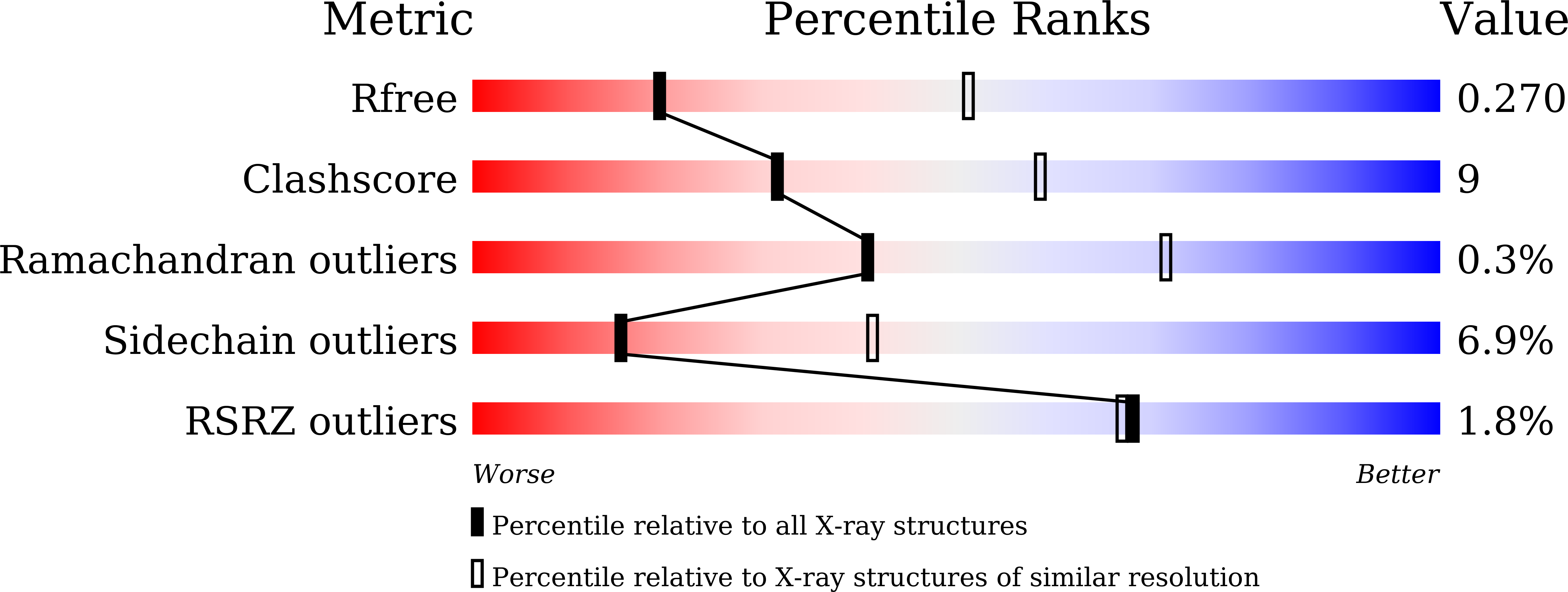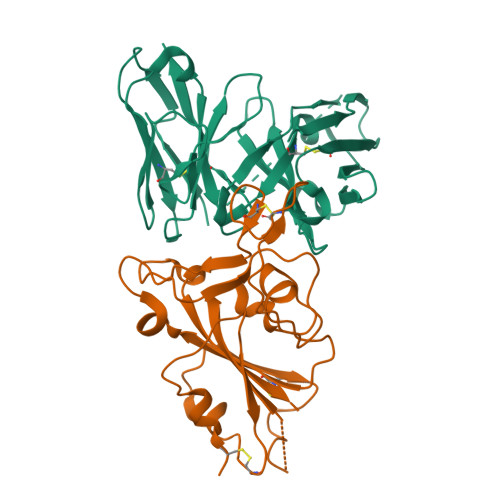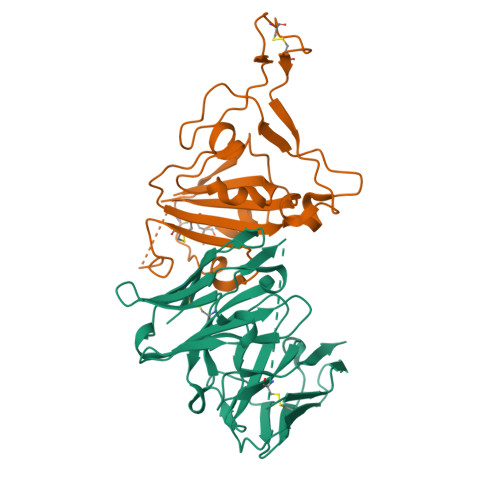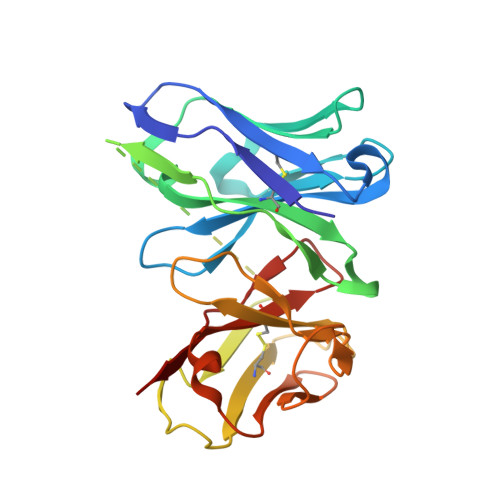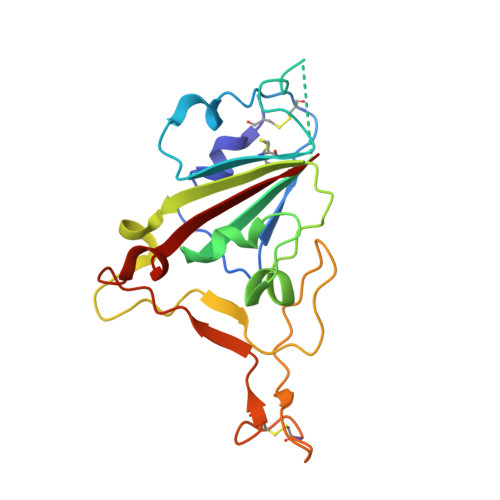Antibody engineering improves neutralization activity against K417 spike mutant SARS-CoV-2 variants.
Li, L., Gao, M., Jiao, P., Zu, S., Deng, Y.Q., Wan, D., Cao, Y., Duan, J., Aliyari, S.R., Li, J., Shi, Y., Rao, Z., Qin, C.F., Guo, Y., Cheng, G., Yang, H.(2022) Cell Biosci 12: 63-63
- PubMed: 35581593
- DOI: https://doi.org/10.1186/s13578-022-00794-7
- Primary Citation of Related Structures:
7VMU - PubMed Abstract:
Neutralizing antibodies are approved drugs to treat coronavirus disease-2019 (COVID-19) patients, yet mutations in severe acute respiratory syndrome coronavirus (SARS-CoV-2) variants may reduce the antibody neutralizing activity. New monoclonal antibodies (mAbs) and antibody remolding strategies are recalled in the battle with COVID-19 epidemic. We identified multiple mAbs from antibody phage display library made from COVID-19 patients and further characterized the R3P1-E4 clone, which effectively suppressed SARS-CoV-2 infection and rescued the lethal phenotype in mice infected with SARS-CoV-2. Crystal structural analysis not only explained why R3P1-E4 had selectively reduced binding and neutralizing activity to SARS-CoV-2 variants carrying K417 mutations, but also allowed us to engineer mutant antibodies with improved neutralizing activity against these variants. Thus, we screened out R3P1-E4 mAb which inhibits SARS-CoV-2 and related mutations in vitro and in vivo. Antibody engineering improved neutralizing activity of R3P1-E4 against K417 mutations. Our studies have outlined a strategy to identify and engineer neutralizing antibodies against SARS-CoV-2 variants.
Organizational Affiliation:
Institute of Systems Medicine, Chinese Academy of Medical Science & Peking Union College, Beijing, 100005, China.







